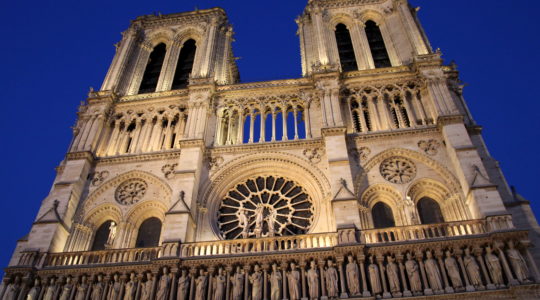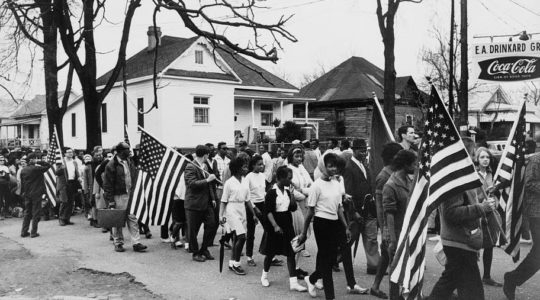All was quiet at the Wailing Wall during the first day of Rosh Hashanah. The Jewish streets in the Old City, in the quarter Meah Shearim and other quarters assumed their usual High Holiday appearance and white-robed, fur-capped worshippers walked the streets leisurely, unafraid and undismayed.
The regular religious services at the Wailing Wall were renewed on Rosh Hashanah eve, Friday, at 4 P. M. in the presence of police and military. A superabundance of military precautions marked the occasion, as the District Commissioner, his Jewish and Arab assistants, as well as the Police Commandant, were on duty, while an additional number of Palestine police patrolled the passages leading to the Western Wall.
Rabbi Chaim Sonnenfeld, the aged Orthodox leader of Jerusalem, conducted the services, completely oblivious to the bustling officials, leading his congregation which did not exceed twenty worshippers as if thousands were jostling around him.
The pavement before the Wall was stripped of all furniture and appurtenances, in accordance with military regulations issued the day before, except a diminutive washstand, a small table for the reading of the Torah, a book-rack and an Ark. All articles were previously measured and stamped by the government. No benches, stools or mattings were allowed. The passage was entirely dark except for an acetyline lamp erected just before the service began near the newly built entrance to the Mosque overlooking the passage from a height of about fifty feet.
Col. Frederick H. Kisch, member of the Jerusalem Zionist Executive ; Jacob Fishman, managing editor of the New York “Jewish Morning Journal,” and Gershon Agronsky, correspondent of the Jewish Telegraphic Agency, formed a part of the small congregation which came to worship at the Wall. M. M. Ussishkin, head of the Jewish National Fund, accompanied by a small party, came to the Wall shortly before the evening services.
The door in the passage at the southern end of the Wall was closed and all traffic was supposed to have been stopped during the service. Notwithstanding the strict regulations issued by the authorities, ten or more Arabs, with no apparent business there, passed up and down the pavement until the police ordered them to cease, which they did reluctantly.
At the Saturday morning service the congregation increased to several hundred, being comprised of members of all communities with a fair sprinkling of American tourists. A number of women came, clinging to the northern part of the passage to the right of the spot where last Yom Kippur a flimsy screen divided the men and women worshippers. The screen was prohibited this year, pending the definition of what constitutes the status quo at the Wall.
Refugees quartered in the public buildings celebrated the New Year as usual, many crowding the synagogues, others making a pilgrimage to the Western Wall, all doing their best not to remember that they were fugitives from quarters still considered not entirely safe for them to return.
The streets of the Old and New City were placarded with notices offering £100 reward for discovery of the murderer of Jacob Cohen, an aged Jew who was stabbed to death near St. George’s Cathedral ten days ago.
Trials for murder of the perpetrators of the Safed massacre will begin on Tuesday in Haifa.
JTA has documented Jewish history in real-time for over a century. Keep our journalism strong by joining us in supporting independent, award-winning reporting.
The Archive of the Jewish Telegraphic Agency includes articles published from 1923 to 2008. Archive stories reflect the journalistic standards and practices of the time they were published.



